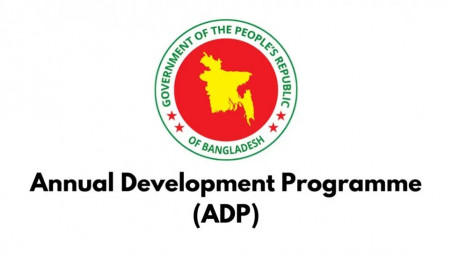Staff Correspondent
Published:2025-05-20 08:49:57 BdST
ADP implementation hits record low
Bangladesh's Annual Development Programme (ADP) implementation has reached a historic low of 41.31% in the first 10 months of the 2024-25 fiscal year, according to the Implementation Monitoring and Evaluation Division (IMED).
This marks the lowest execution rate since the government's tracking began in FY2011-12.
During this period, ministries and divisions utilised approximately Tk93,425 crore from the Revised ADP (RADP), which was reduced to Tk2,26,164.95 crore from the original Tk2,65,000 crore due to underperformance. In comparison, Tk1,07,612.45 crore was spent during the same period in FY2023-24, reflecting a significant decline.
Experts attribute this downturn to political instability following the July 2024 uprising, leading to a sluggish start to the fiscal year. The interim government's cautious approach to project implementation and the departure of contractors have further exacerbated the situation. Notably, the Health Services Division reported an implementation rate of only 14.41%, highlighting challenges in critical sectors.
With only two months remaining in the fiscal year, the government faces challenges in meeting development targets, raising concerns about the effectiveness of current fiscal policies and the need for urgent reforms.
According to IMED data, Tk51,273 crore was spent from government funds in the first 10 months of the fiscal year - 38% of the total allocation. In the same period last year, Tk70,908 crore was spent, which was 44% of the government fund allocation.
During the same period, Tk35,559 crore (43.9%) was spent from foreign aid funds, compared to Tk48,468 crore (58%) in the previous year. Additionally, Tk6,593 crore was spent from organisations' own funds during the first 10 months of the fiscal year.
The government allocated the highest ADP funds to 15 ministries and divisions, which together received 74.48% of the total ADP allocation. The overall ADP implementation largely depends on these ministries and divisions.
Among them, several have very low implementation rates. For example, the Health Services Division has spent only 14.90% of its allocation. Officials said that the health sector generally struggles with fund utilisation due to limited capacity. Moreover, the Fifth Health, Nutrition, and Population Programme - a five-year plan that was scheduled to begin in July - has still not been approved, which has further stalled ADP spending in the health sector.
Among the other highest-funded ministries/divisions, the Bridge Division spent 29.96%, the Ministry of Shipping implemented 29.83%, the Ministry of Railways spent 33.27%, and the Ministry of Civil Aviation and Tourism spent 39%.
On the other hand, the Energy Division spent 85.85% of its allocation. Other notable spenders include the Power Division at 61.97%, Ministry of Agriculture 62.46%, Local Government Division 54.32%, Secondary and Higher Education Division 50.66%, Ministry of Water Resources: 49%, Ministry of Housing and Public Works 48%, and Roads and Highways Division: 46.31%.
The significant underperformance in ADP implementation raises questions about the government's ability to achieve its development objectives and underscores the need for immediate attention to address the underlying issues.
Unauthorized use or reproduction of The Finance Today content for commercial purposes is strictly prohibited.


